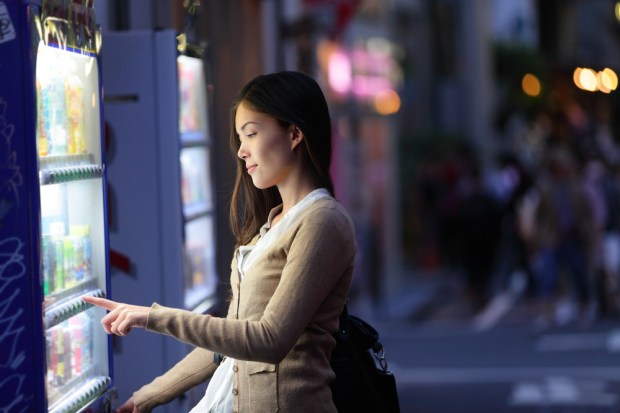BPOC: Big Payments On Campus

No more cheese and crackers, years old, dropping from vending machines to fuel all night cramming in the dorm room. Today’s student is health-conscious, and today’s unattended retail can offer tech-savvy students around-the-clock access to health(ier) eating, as USA Technologies Director Amelia Powell explained in the latest PYMNTS Topic TBD.
Everyone knows about the freshman 15. Everyone knows about the lack of healthy choices on campus. But that’s changing with a confluence of smart vending machines and tech-savvy students. In the latest Topic TBD, USA Technologies Director Amelia Powell told PYMNTS’ Karen Webster about the sea changes afoot in the way students get what they need, when they need it, aided by technology.
Powell said that food in a self-service environment — or vending — on campus over the last decade “has changed tremendously … Ten years ago, you might find a vending machine tucked away in a corridor of a school building, but starting about five years ago and moving forward from there, the environment has gotten a lot more sophisticated.”
Unattended retail operators, said Powell, can research the entire campus as an ecosystem in an endeavor to complement the institution’s dining program and can even integrate that program at the vending location, providing a 24/7/365 experience.
And the payments experience can extend across prepaid mechanisms or mobile apps, she said. “Many times,” said Powell, “these students are using declining balance cards that are provided by … Blackboard or some of these big service providers,” and as technology has evolved, students have been able to engage with additional retailing locations and with cards, cash and mobile wallets.
The offerings within the machines themselves have evolved as well, agreed Webster and Powell. The latter noted that there are often riders in the agreements between vendors and schools that stipulate that a certain percentage of the food being sold be healthy. Operators foster better communication with consumers as they are walking around campus, said Powell. Continuous technology-driven feedback from those consumers allows vendors to keep track of the amount of healthy food being eaten and advertise accordingly — or reward according to loyalty programs.
“Loyalty is a growing trend within the campus environment,” said Powell, especially in a closed environment where a pool of consumers has access to the same machines repeatedly and especially as those users skew younger and are more comfortable with tech-driven payments and loyalty programs.
That’s important against a backdrop where 95 percent of the students have had a smartphone since before they arrived on campus, said Powell. Coming armed with technology means that students will take advantage of those loyalty programs on a consistent basis.
In addition to students, said Powell, “there are other populations that are captive on campus,” including faculty and staff, and those populations may have different needs (and diets) tied to the vending experience. Adding payments functionality to the card readers at the vending machines themselves — spanning credit and debits — can add to participation rates, she said.
Average ticket sizes have also been growing at vending machines that are cashless, as transactions are no longer rooted in spare change or crumpled dollar bills found in pockets.
The cashless and unattended retail experience at the vending machine can inspire and trigger adoption activity across other use cases on campus, said Powell, including laundry and parking services, school supplies and even prescription drugs dispensed by medical centers.
